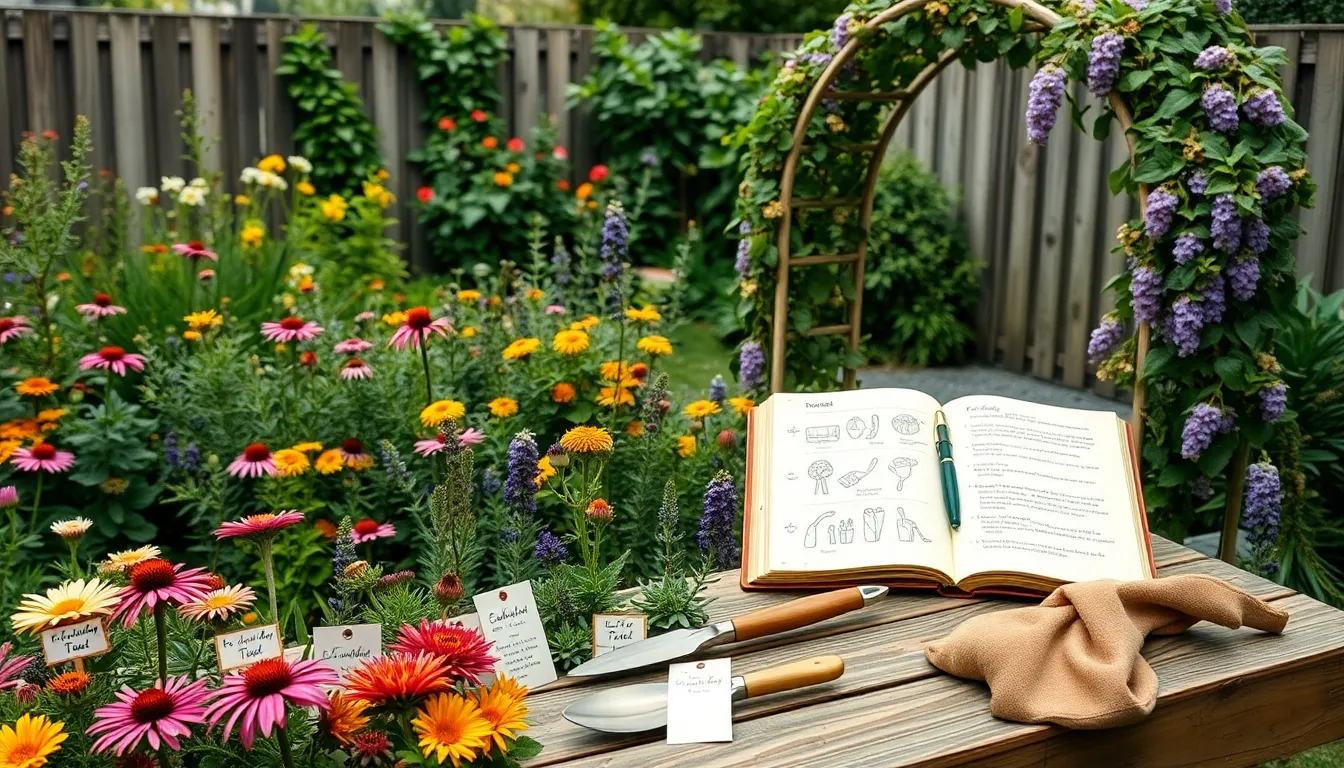Imagine stepping into your garden and finding it alive with the gentle hum of bees, the flutter of butterflies, and the vibrant colors of blooms swaying in a gentle breeze. Designing a pollinator garden not only transforms your outdoor space into an ecological haven but also plays a crucial role in supporting the delicate balance of our ecosystem. Whether you’re just starting out with your first garden or you’re a seasoned green thumb looking to make a positive impact, crafting a haven for pollinators can be both rewarding and essential.
Pollinators are vital to the reproduction of many plants and the production of our food supply, yet they face increasing threats from habitat loss and environmental changes. By equipping yourself with the right tools and knowledge, you can create a sanctuary that supports these crucial creatures, regardless of your gardening experience. In this article, we will explore the essential tools you’ll need to design a pollinator garden, from selecting the right plants to understanding the nuances of garden layout and maintenance.
As you embark on this journey, you’ll learn how to choose native plants that provide nectar and shelter, ensuring your garden is a thriving, year-round refuge for pollinators. We’ll guide you through the process of planning and designing your garden space, offering practical tips that cater to both small urban plots and expansive rural landscapes. With each step, you’ll discover how easy and fulfilling it is to contribute to the well-being of pollinators while enhancing the beauty and biodiversity of your own backyard.
Choosing the Right Plant Varieties
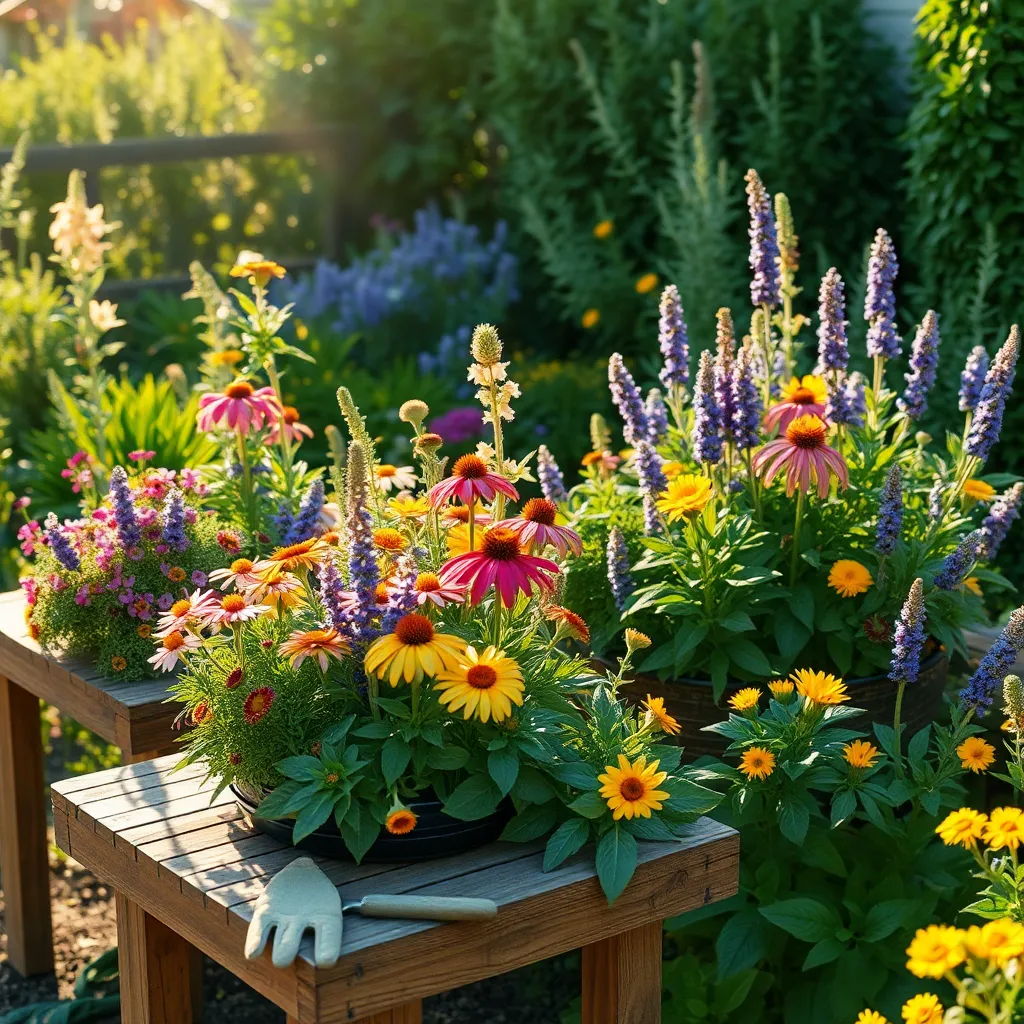
When designing a pollinator garden, it’s crucial to choose plant varieties that attract a wide range of pollinators such as bees, butterflies, and hummingbirds. Select native plants as they are well-adapted to your local climate and soil conditions, requiring less maintenance and providing a familiar habitat for local pollinators.
Consider the bloom time of your plant selections to ensure a continuous food source for pollinators throughout the growing season. Plant a mix of early, mid, and late-season bloomers to maintain interest in your garden and support pollinators year-round.
Variety in flower color, shape, and size can appeal to different pollinators, making your garden more inviting. For example, tubular flowers can encourage visits from hummingbirds, while flat-topped or clustered flowers are inviting to butterflies and bees.
Beginners should start with easy-to-grow varieties like coneflowers, black-eyed Susans, and lavender, which are known to thrive in a variety of soil types and conditions. Ensure these plants are placed in well-draining soil and receive at least six hours of sunlight per day for optimal growth.
For the more experienced gardener, consider experimenting with heirloom varieties that may offer unique benefits to pollinators. Heirloom plants often provide more nectar and pollen compared to hybrid varieties, supporting a healthier pollinator population.
Understanding Pollinator-Friendly Layouts
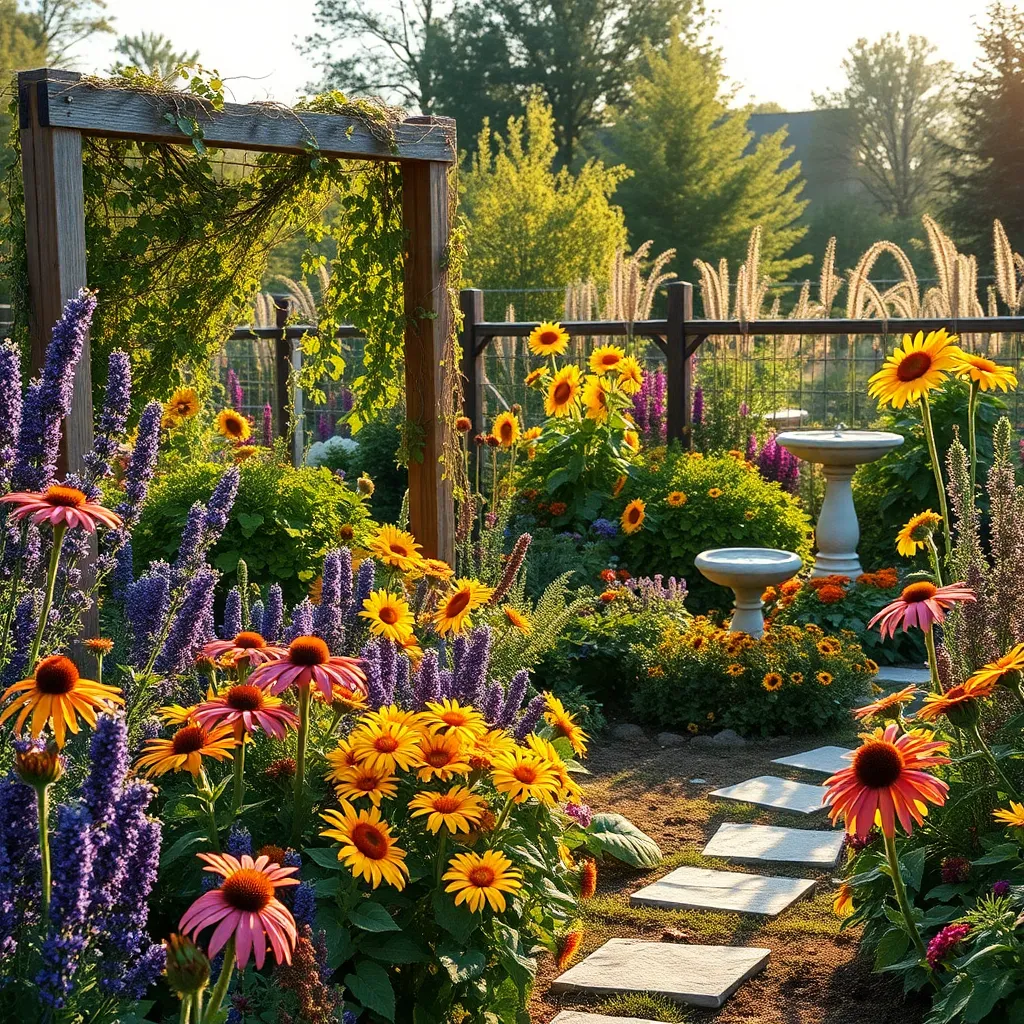
Designing a pollinator-friendly garden layout involves understanding the movement and needs of pollinators like bees, butterflies, and hummingbirds. Group plants by bloom time to ensure that your garden offers continuous nectar sources throughout the growing season.
A diverse selection of plant shapes and sizes can attract a variety of pollinators. For instance, tall plants like sunflowers can provide perches for resting, while low-growing ground covers such as creeping thyme offer easy access to nectar.
Consider the placement of water sources, as pollinators need hydration just like any other living creature. A shallow dish with pebbles or a birdbath can serve as a perfect drinking spot if kept clean and filled regularly.
To create a welcoming environment, use native plants that are well adapted to your local climate and soil conditions. Native species are often more appealing to local pollinators and require less maintenance, making them an excellent choice for both beginner and experienced gardeners.
Must-Have Hand Tools for Precision
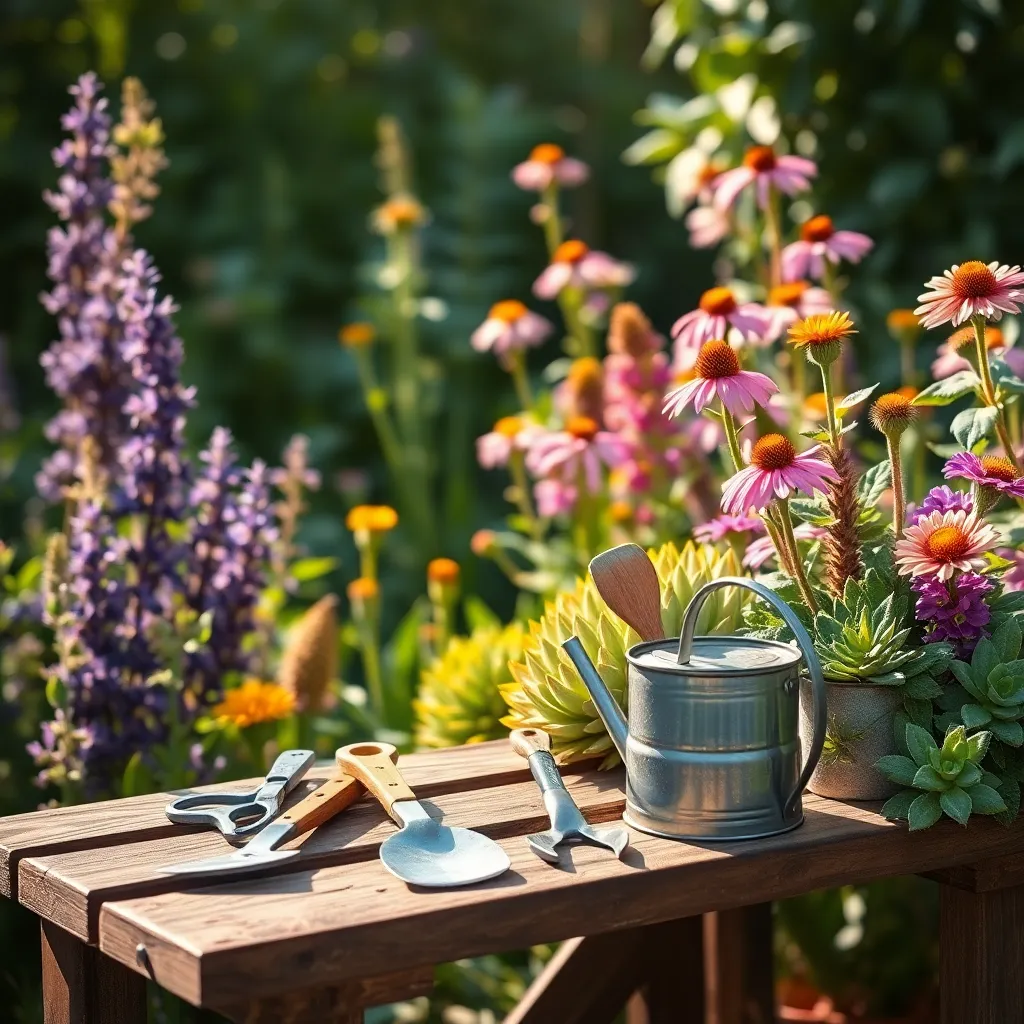
When designing a pollinator garden, having the right hand tools is crucial for achieving precision in planting and maintenance. A high-quality pair of bypass pruners is essential for making clean cuts on stems and branches, which promotes healthy plant growth.
Investing in a sturdy hand trowel can make a significant difference when planting seeds or small seedlings. Choose a trowel with a comfortable grip and a stainless steel blade to easily penetrate various soil types, ensuring your plants establish strong roots.
For more detailed work, a pair of precision snips will allow you to deadhead flowers and prune delicate plants without causing damage. These snips are particularly useful for maintaining herbs and small perennials that attract pollinators, ensuring continuous blooming and healthy growth.
Additionally, a hand fork is invaluable for loosening compacted soil and removing weeds that can compete with your plants for nutrients. By using a hand fork, you can work around plant roots with minimal disturbance, keeping your pollinator garden tidy and thriving.
Selecting Efficient Irrigation Solutions
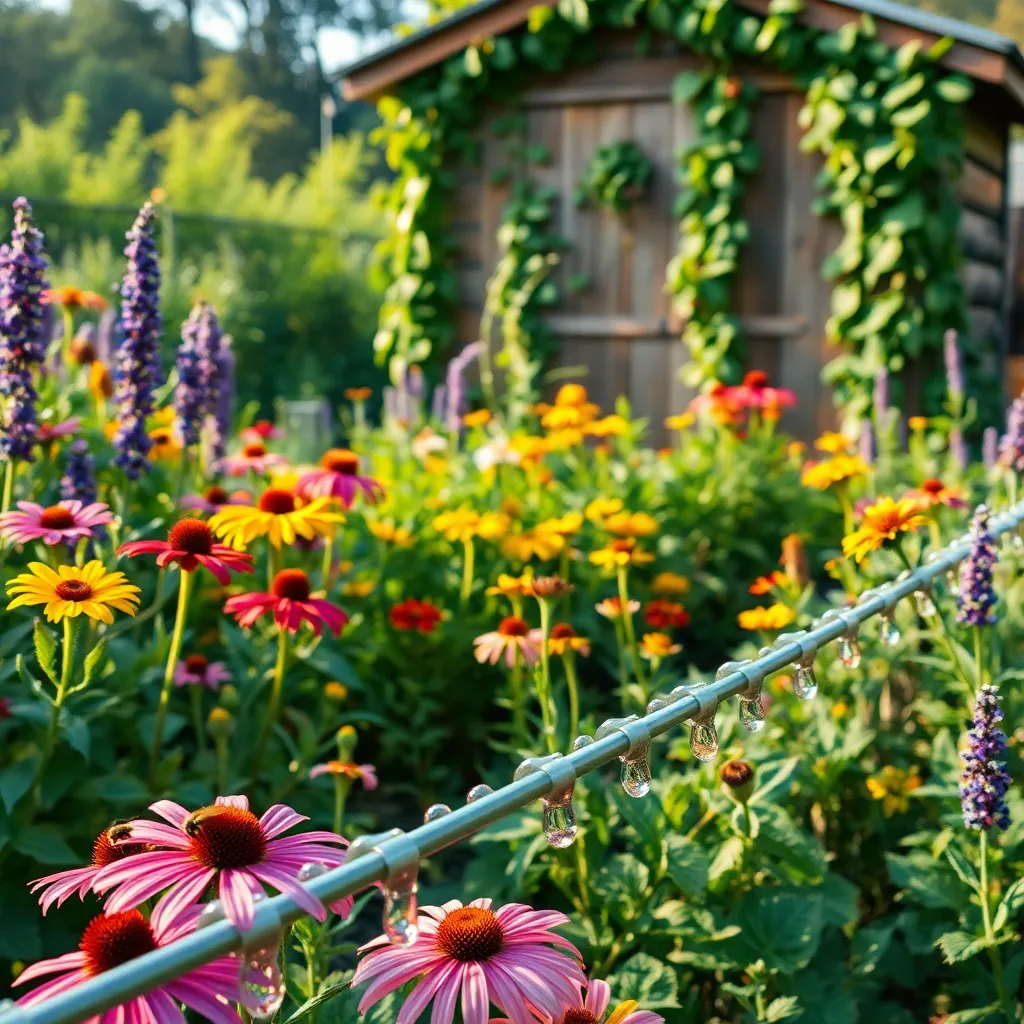
Choosing the right irrigation solution for your pollinator garden is crucial for maintaining healthy plants and attracting beneficial insects. Drip irrigation systems are an excellent choice as they deliver water directly to the plant roots, minimizing water wastage and reducing leaf wetness, which can lead to fungal diseases.
Installing a drip system is relatively straightforward and can be customized to fit any garden size. For beginners, start with a simple kit that includes all necessary components like hoses, emitters, and connectors, ensuring your setup is efficient and effective.
For those looking to conserve water, consider using soaker hoses, which are porous and allow water to seep directly into the soil. This method is particularly useful in sandy or well-draining soils where water retention is a challenge.
More advanced gardeners might explore smart irrigation controllers that adjust watering schedules based on weather conditions. These systems can reduce water usage by up to 30% and ensure your plants receive optimal moisture levels, even when you’re not around.
Incorporating Bee and Butterfly Habitats
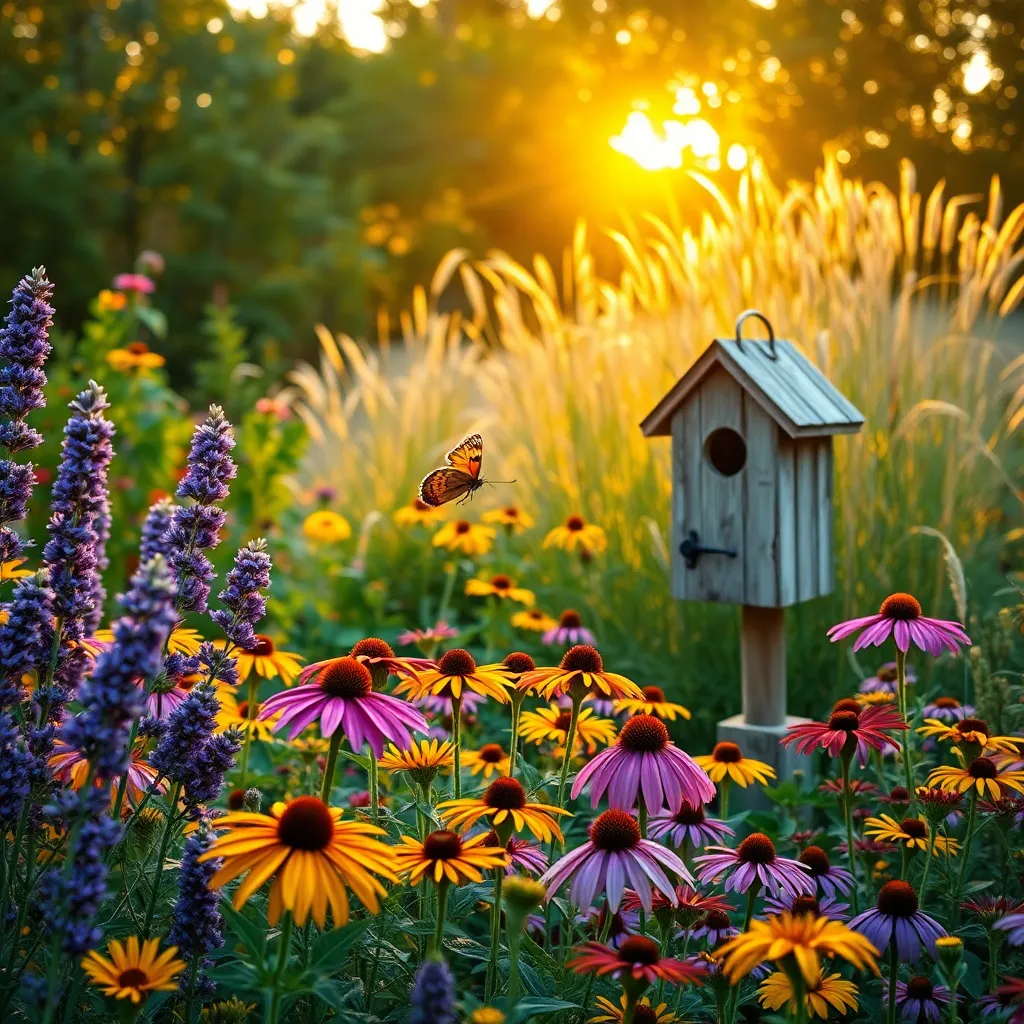
Creating a bee and butterfly habitat in your garden begins with selecting the right plants. Choose native flowering plants that bloom at different times of the year to provide a continuous food source.
Butterflies and bees are attracted to vibrant colors, so include a variety of hues in your garden design. Consider planting species like coneflowers, milkweed, and lavender, which are known to attract these pollinators.
Group similar plants together to create larger patches of each species. This practice not only makes it easier for pollinators to find the plants but also enhances the visual appeal of your garden.
Make sure to provide a water source for bees and butterflies, such as a shallow dish with water and stones for resting. This is essential, especially during hot weather, as it helps maintain hydration for your garden visitors.
Incorporate a mix of plant heights and structures to cater to different pollinators. Taller plants like sunflowers can provide shelter, while ground-cover plants like thyme offer additional food sources.
For advanced gardeners, consider adding a bee house or butterfly feeder to further support local populations. These structures can be placed in sunny, sheltered spots to encourage nesting and feeding.
Conclusion: Growing Success with These Plants
In designing a pollinator garden, we explored five key relationship concepts: understanding the unique needs of pollinators, selecting the right plants for a nurturing environment, embracing seasonal changes together, fostering a safe habitat, and encouraging biodiversity. Just like cultivating a garden, nurturing relationships requires intention and care. The next immediate step you can take is to identify a small area in your garden or life where you can start making these changes today. Whether it’s choosing a plant that attracts bees or initiating a heartfelt conversation, small actions can lead to flourishing connections.
Now, imagine the joy of seeing your relationship blossom, just as a garden does when tended with love. To ensure these insights are always at your fingertips, bookmark this article. It will serve as your guide on this nurturing journey. As you take these steps, know that you’re paving the way for enduring relationship success, where harmony and growth are always within reach. Remember, every small action counts towards a thriving partnership, so start today and watch your relationships grow beautifully. 🌼

